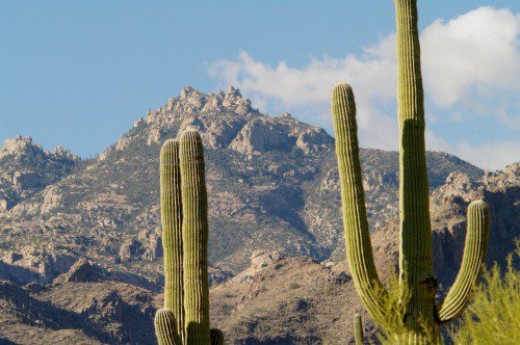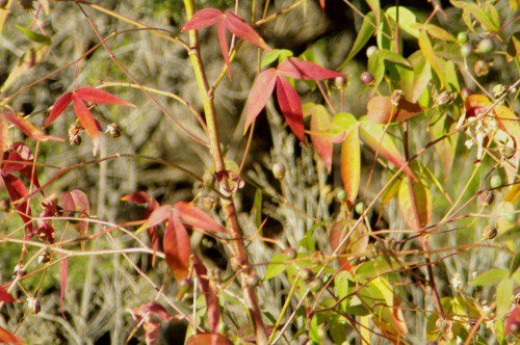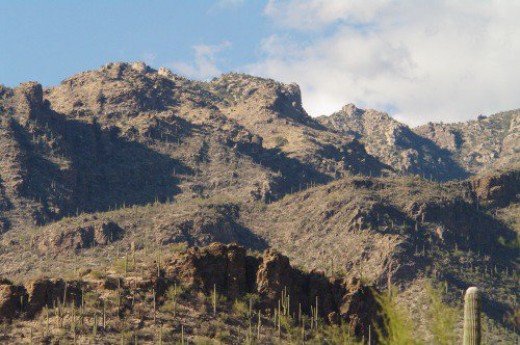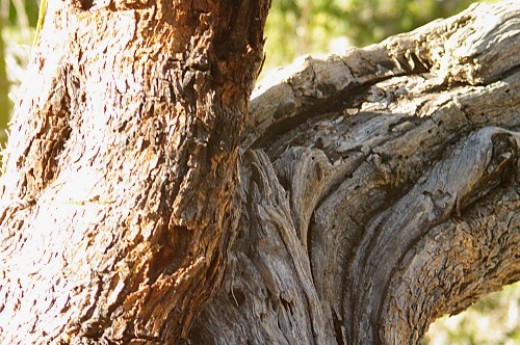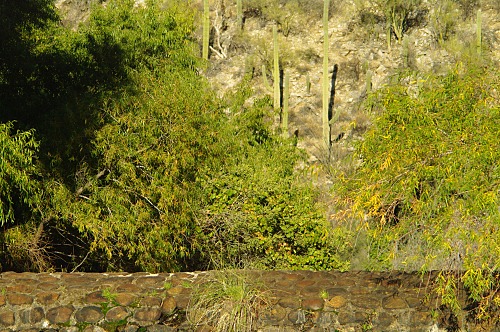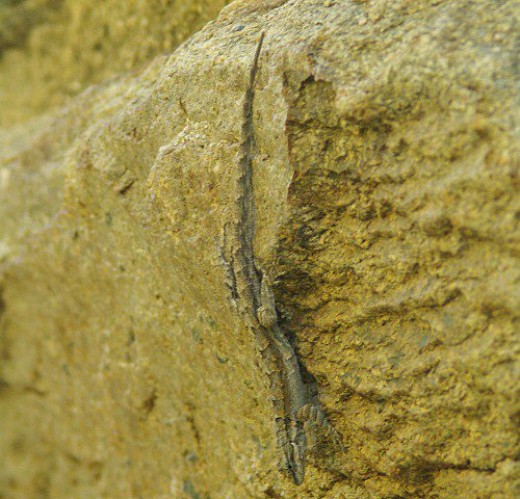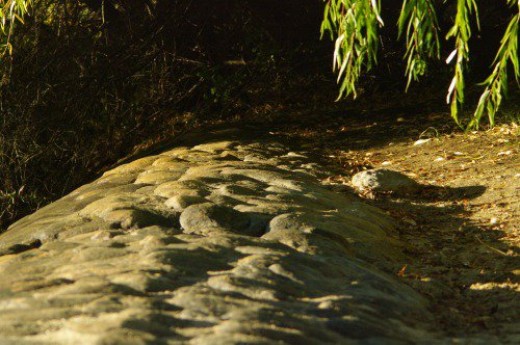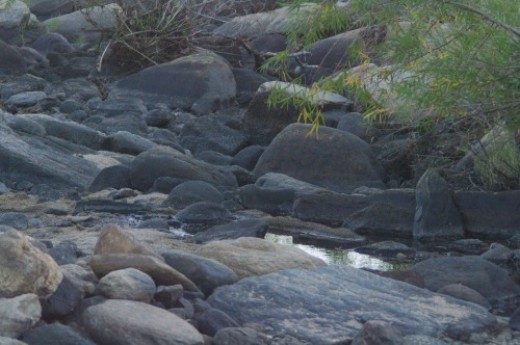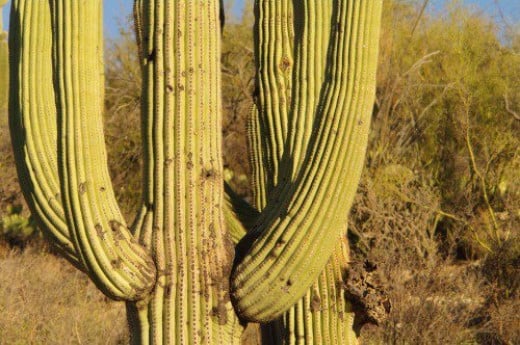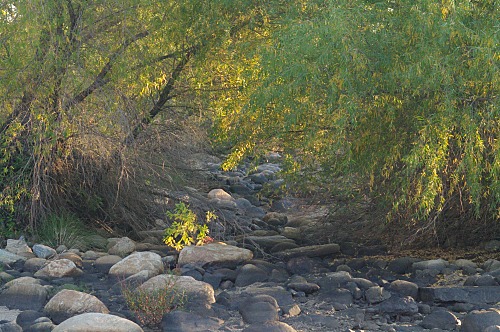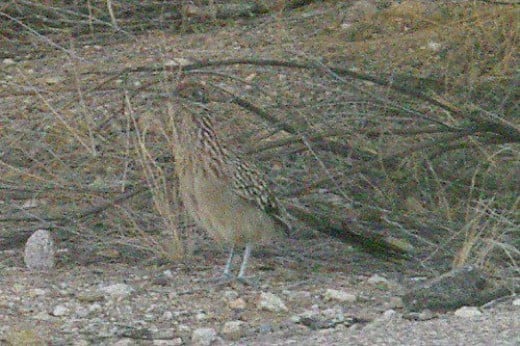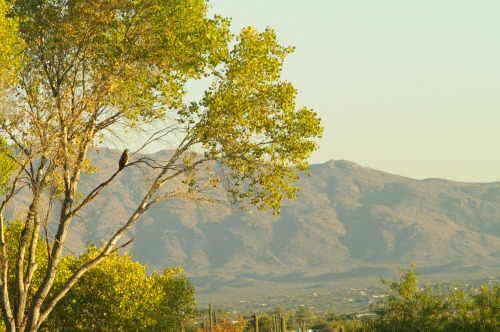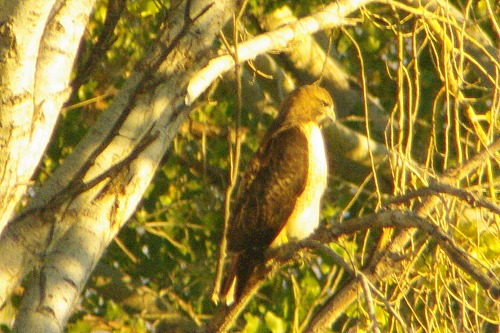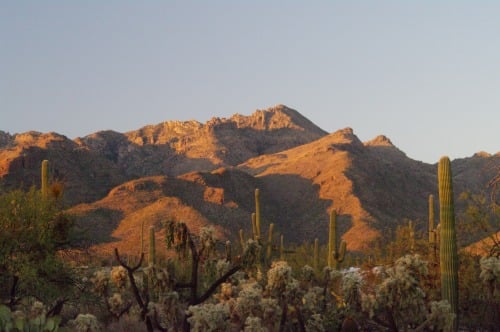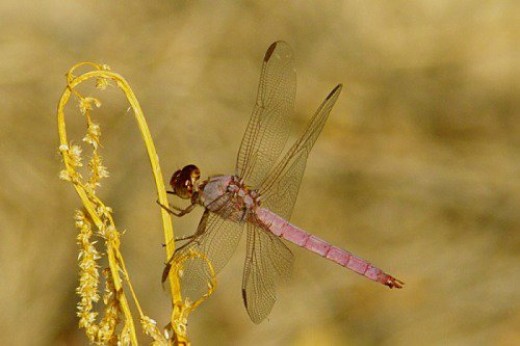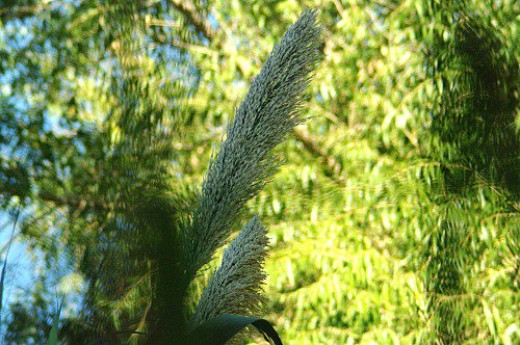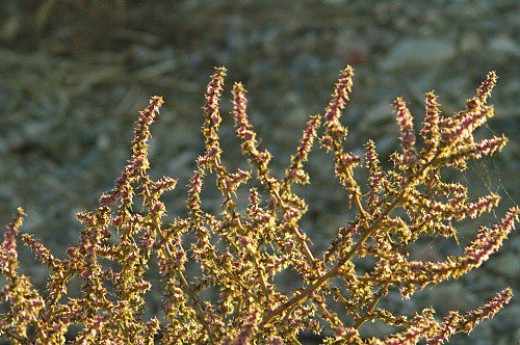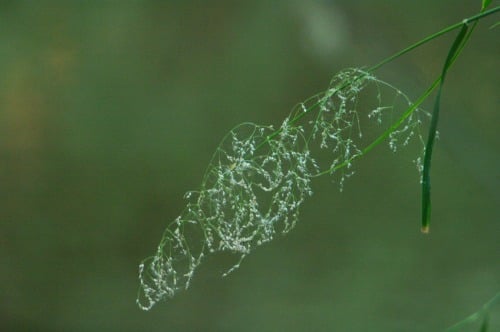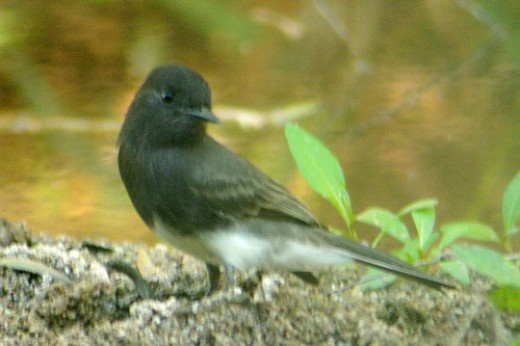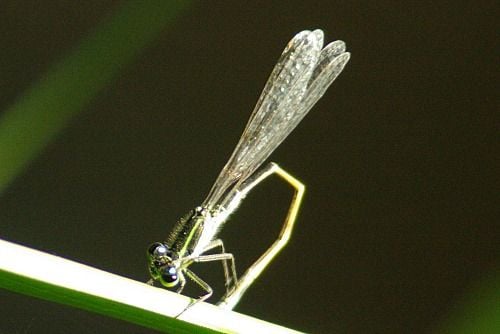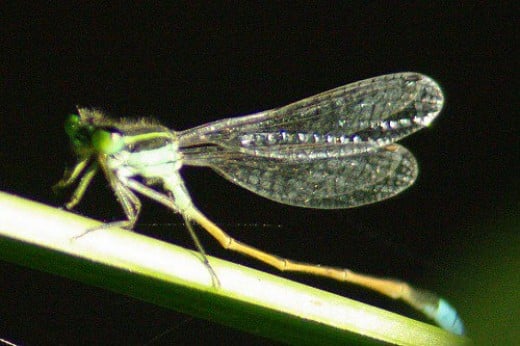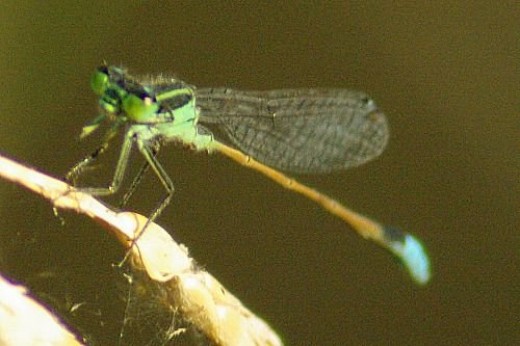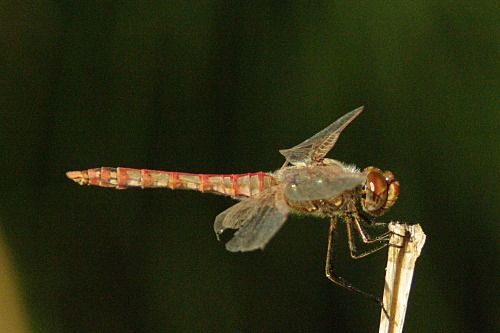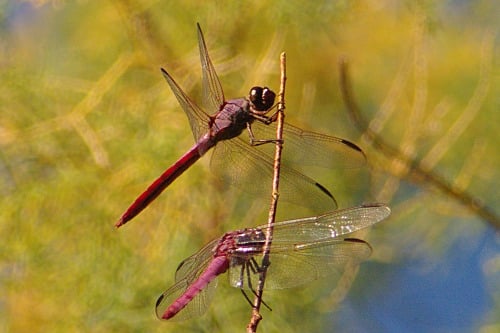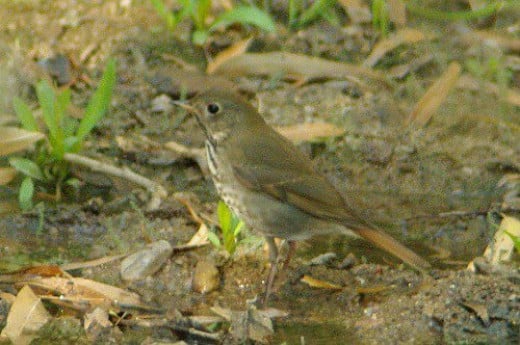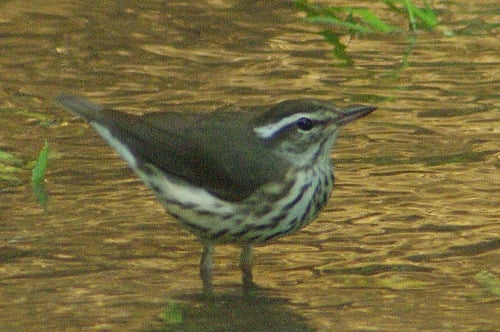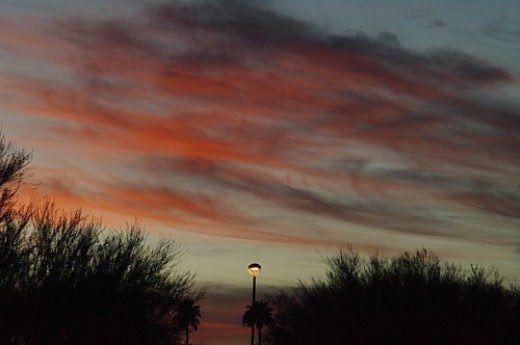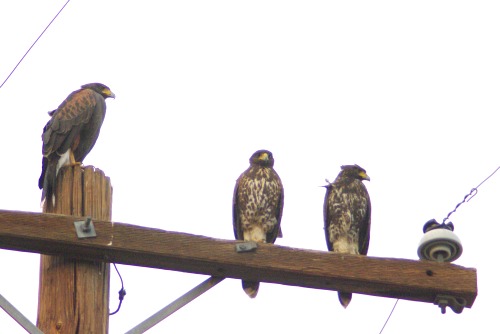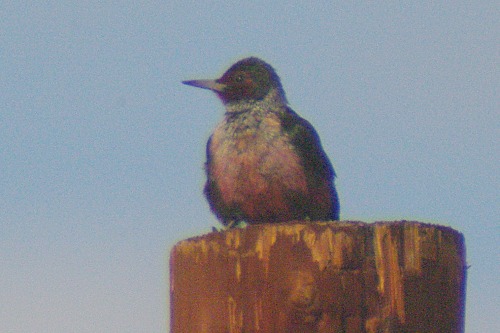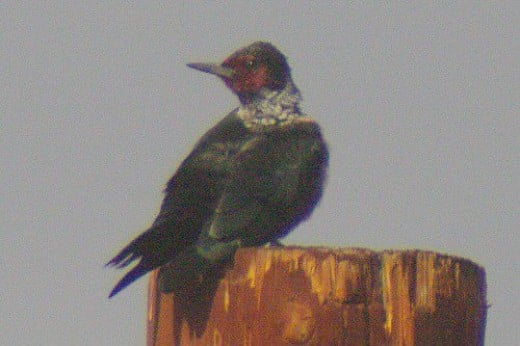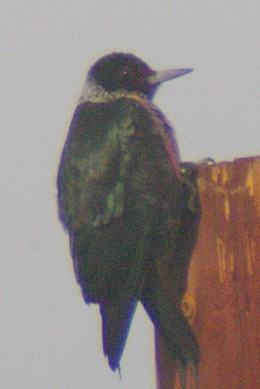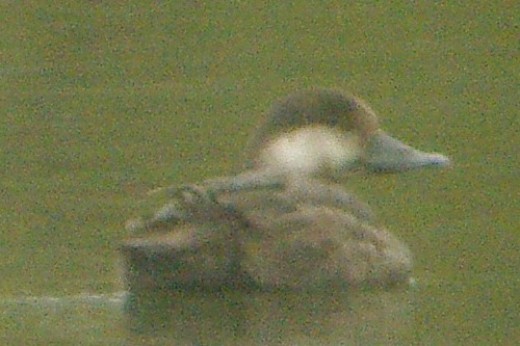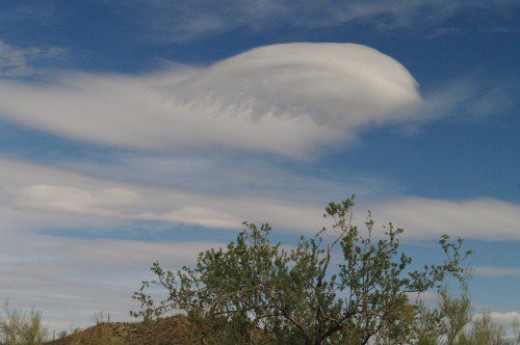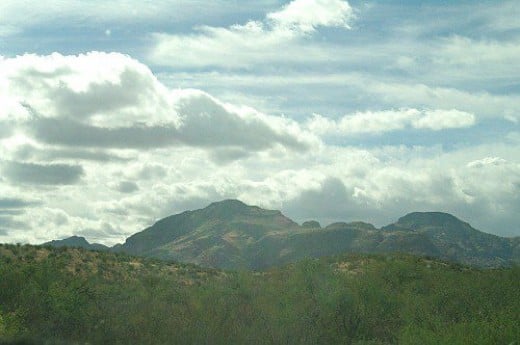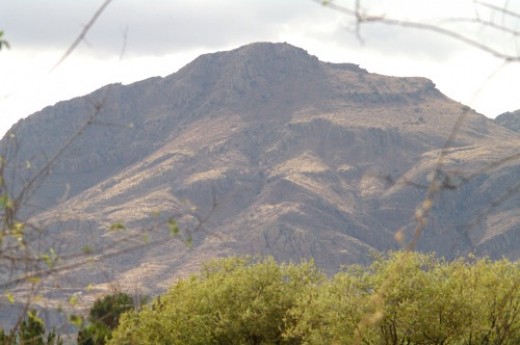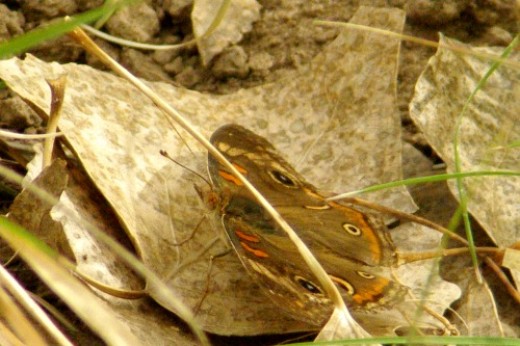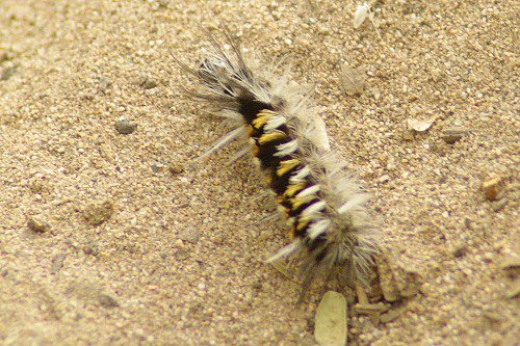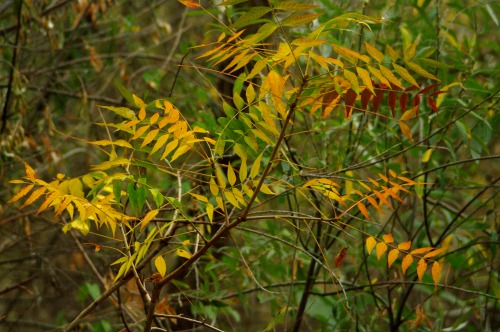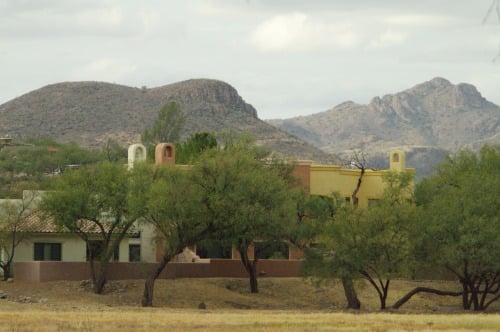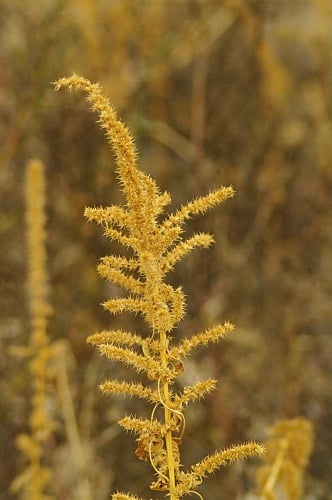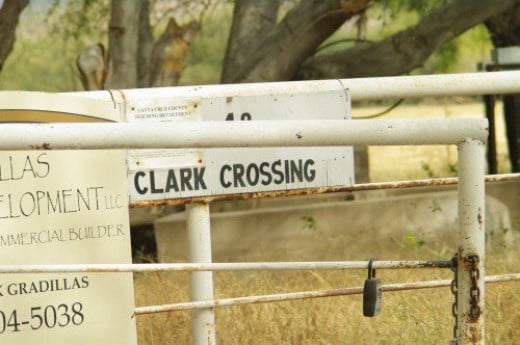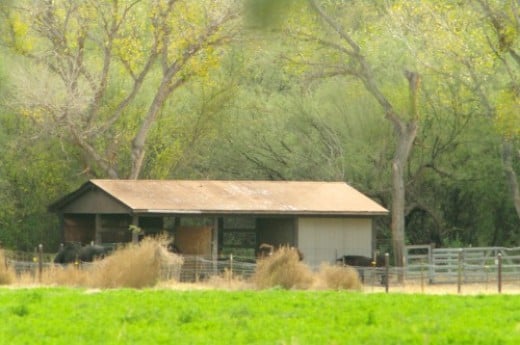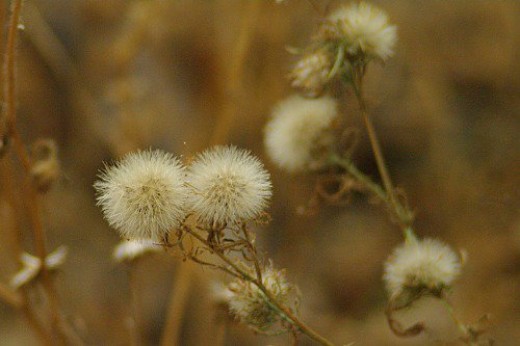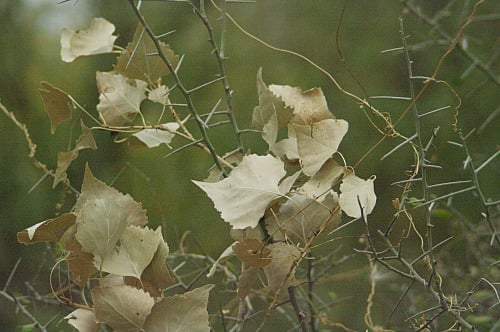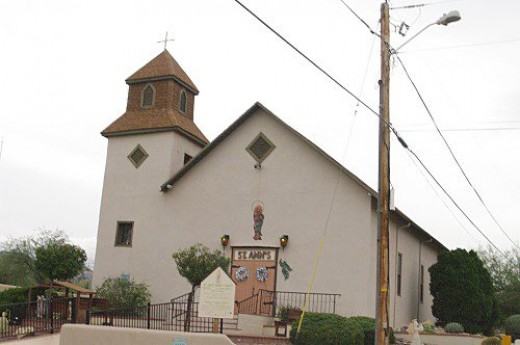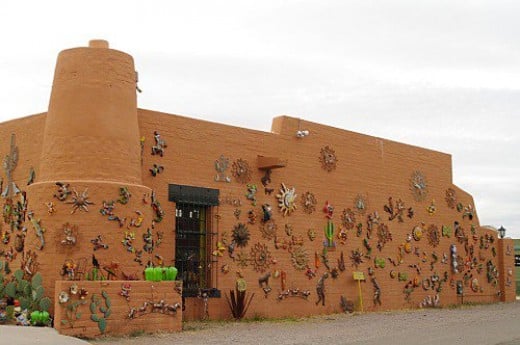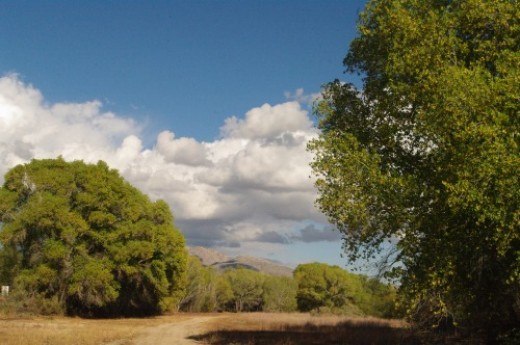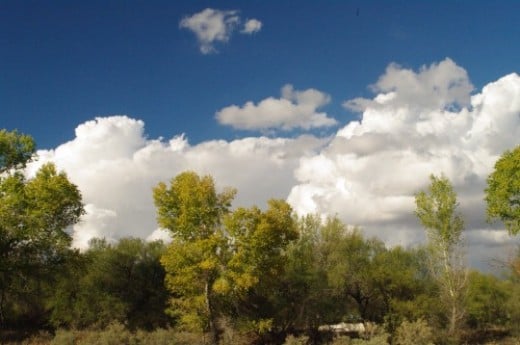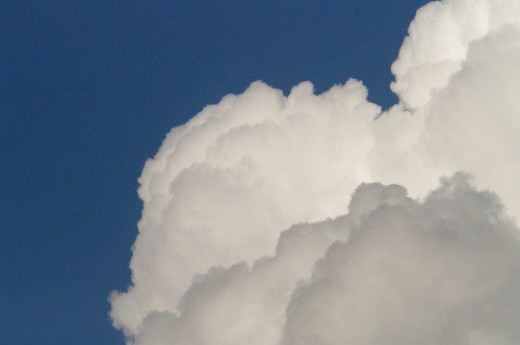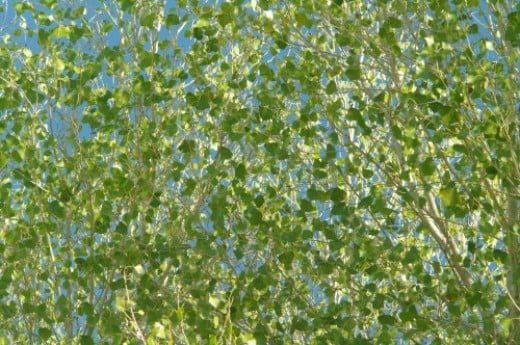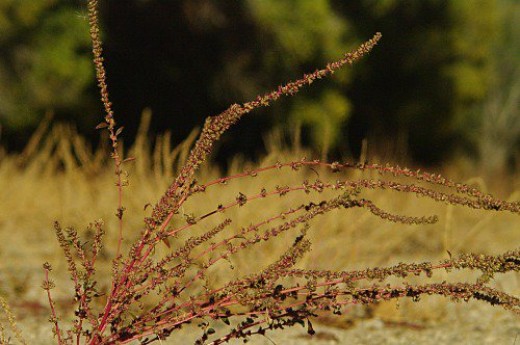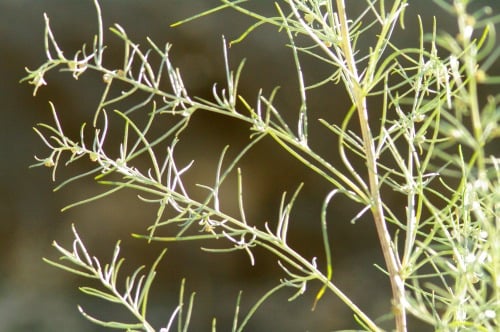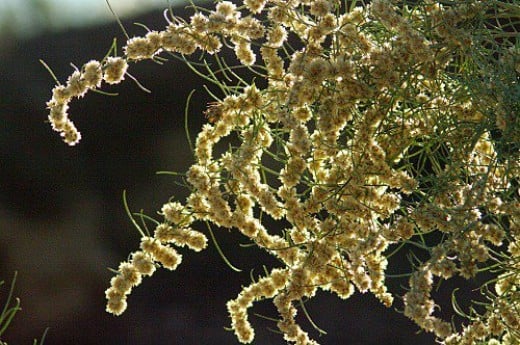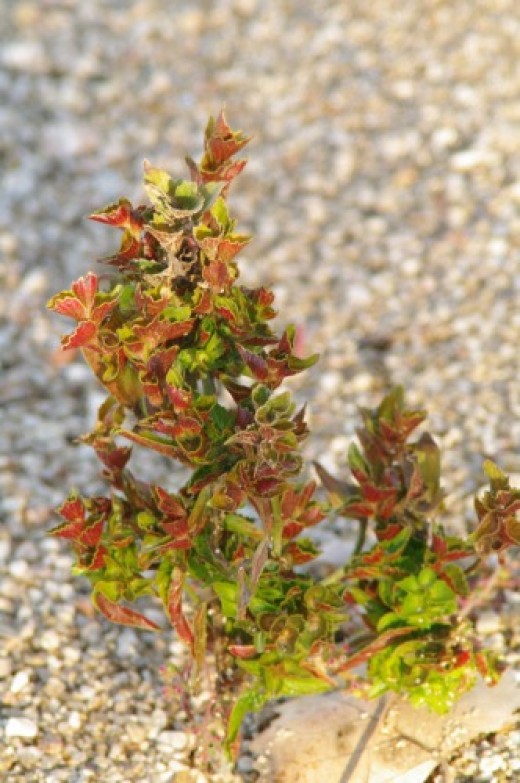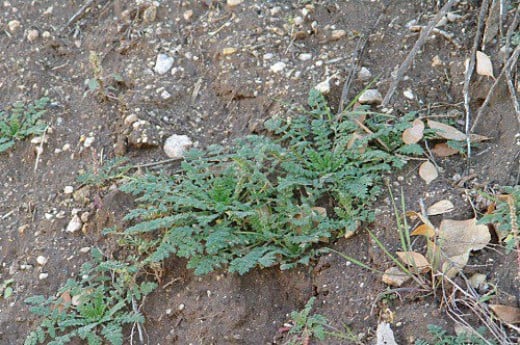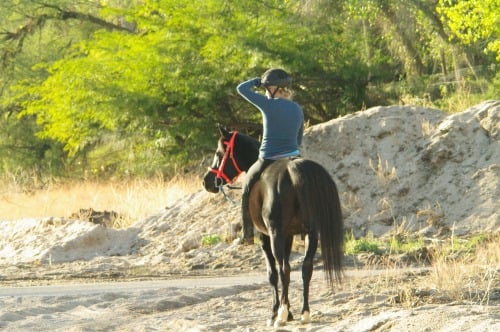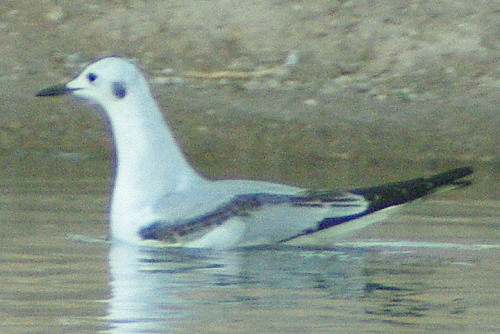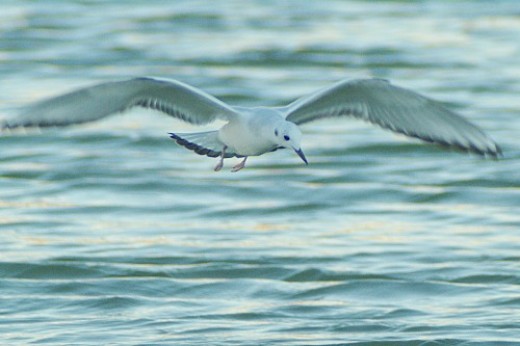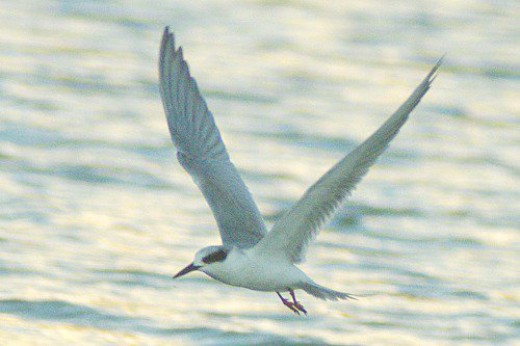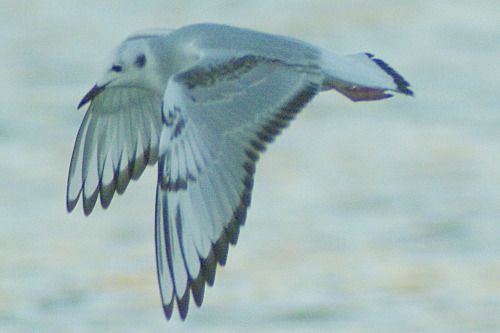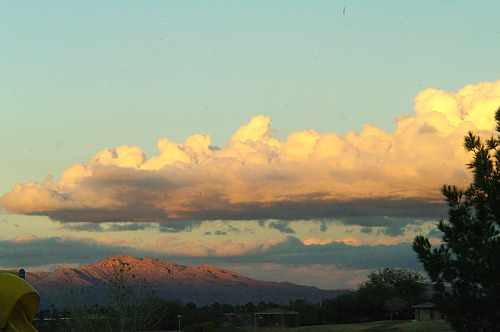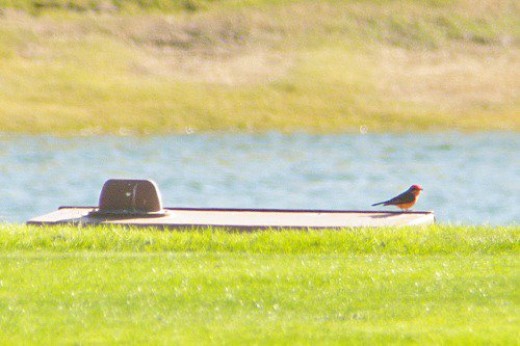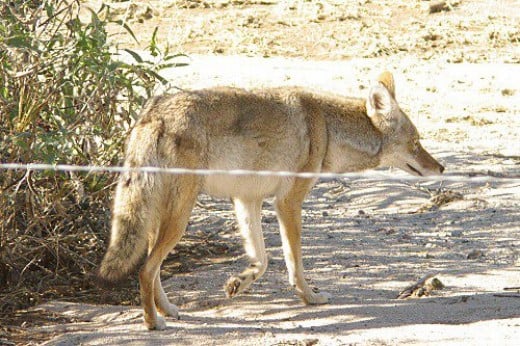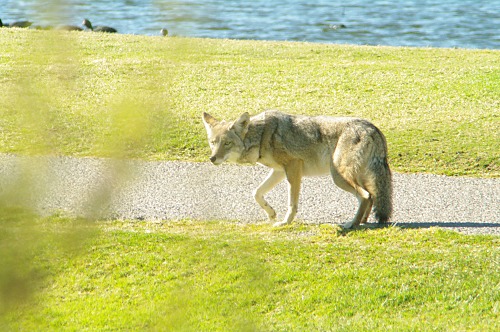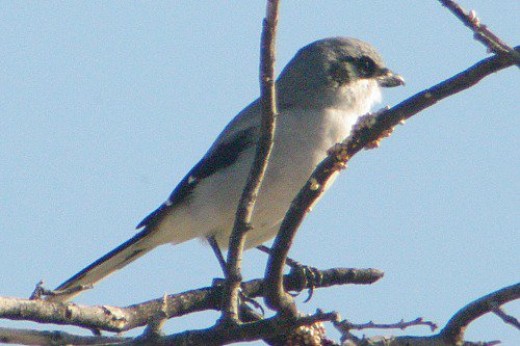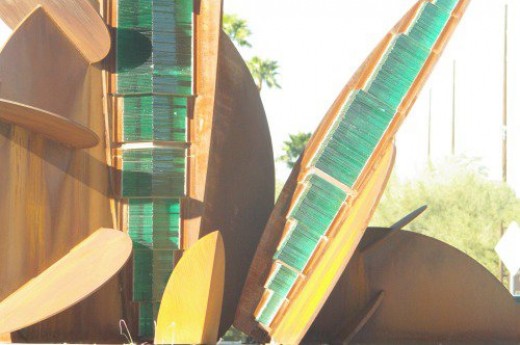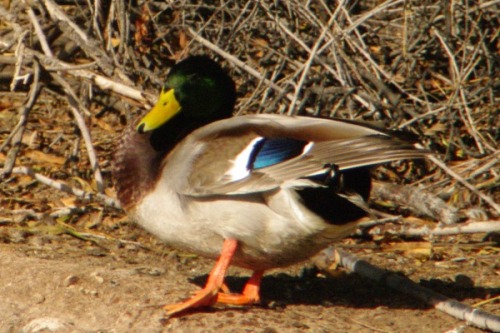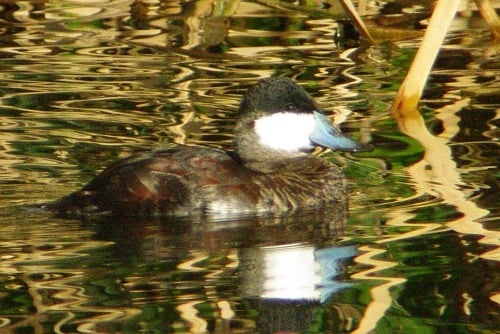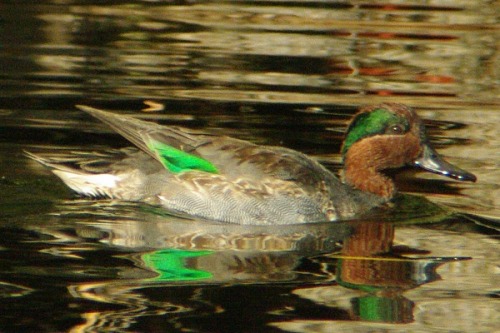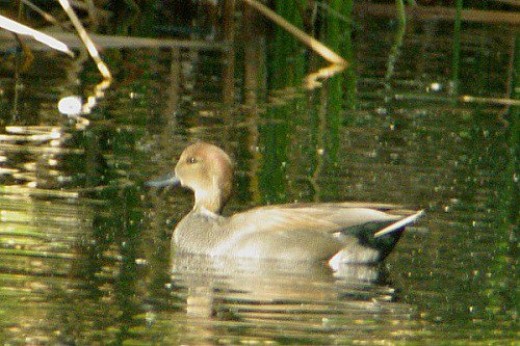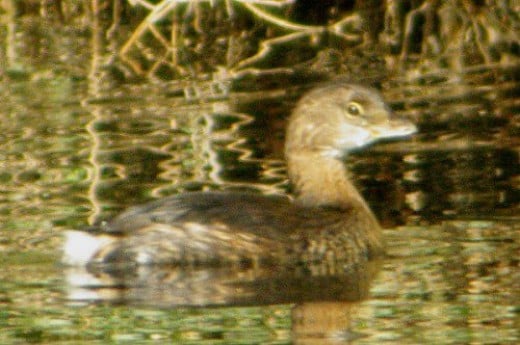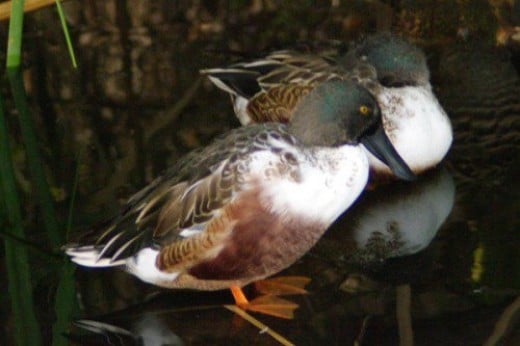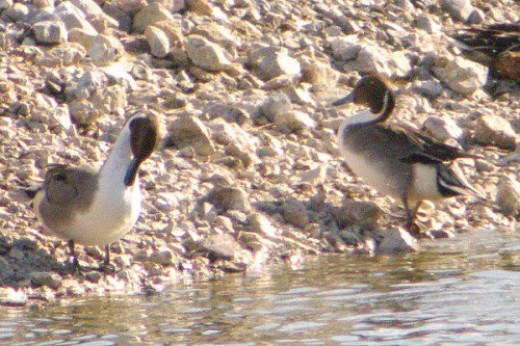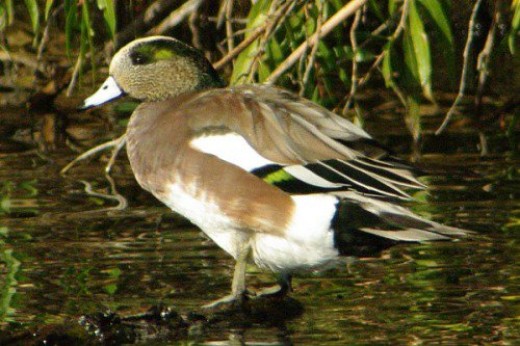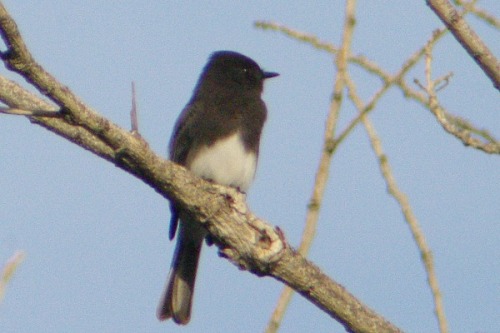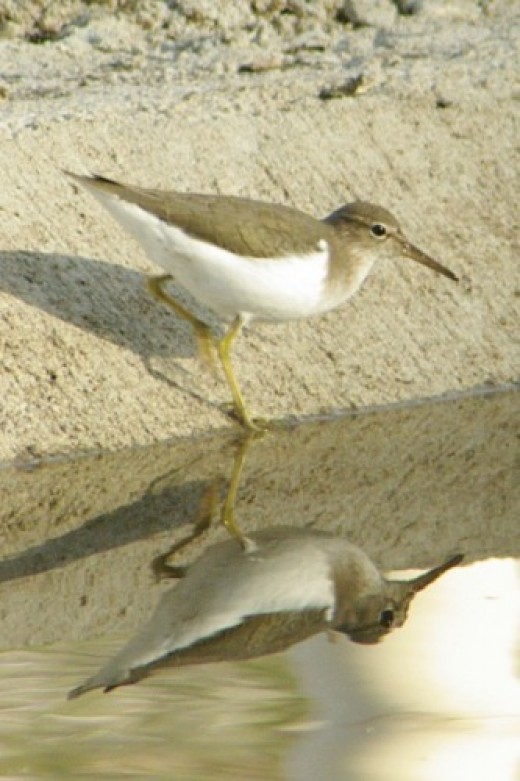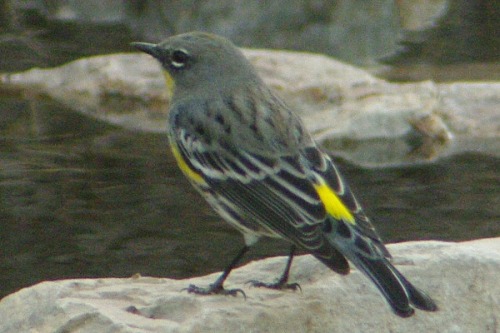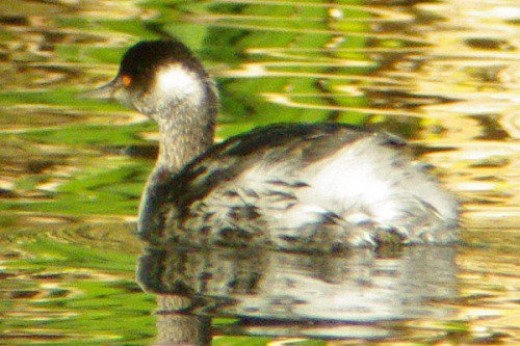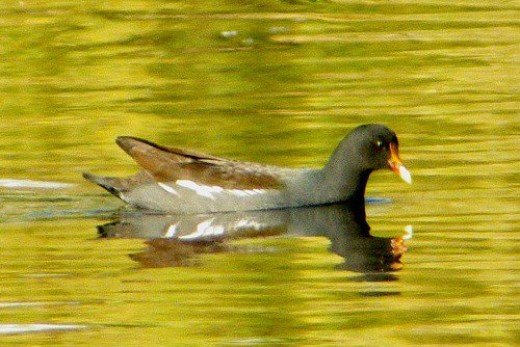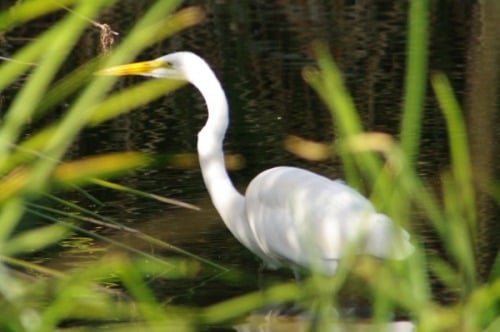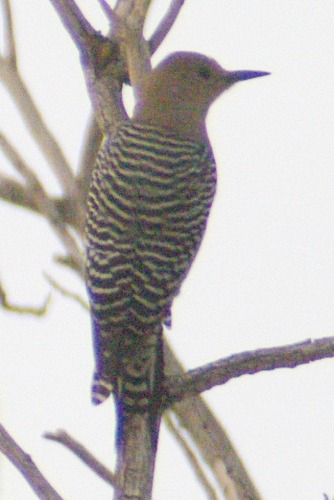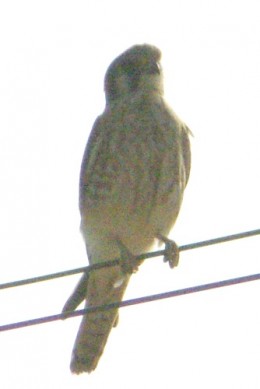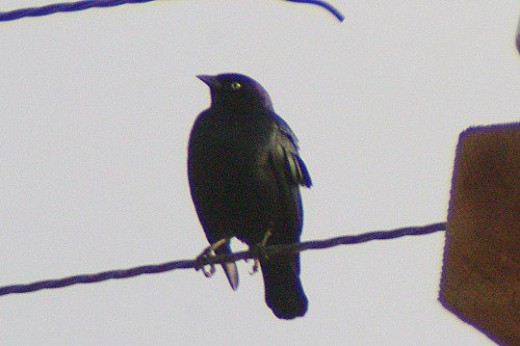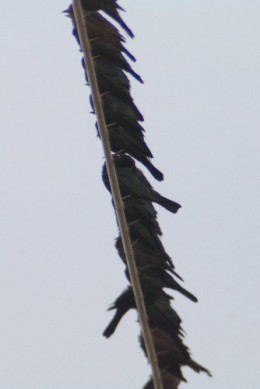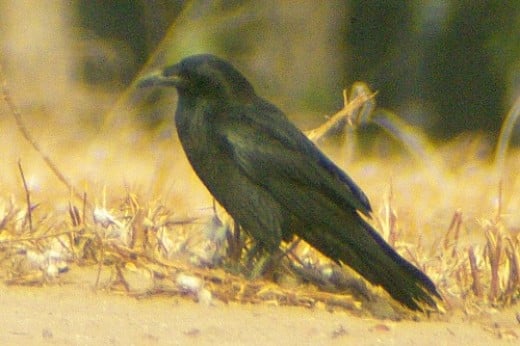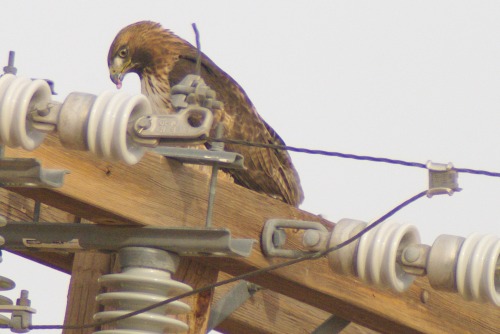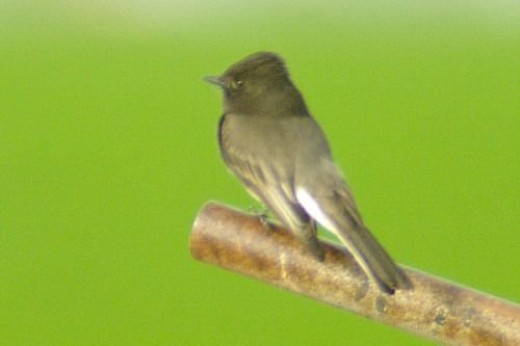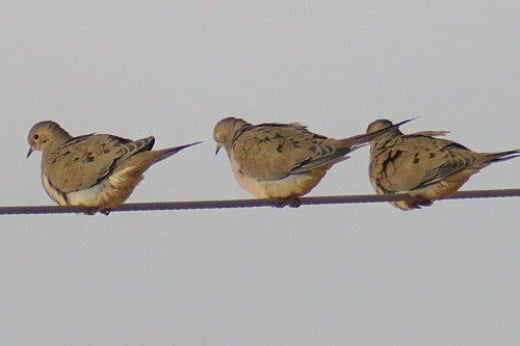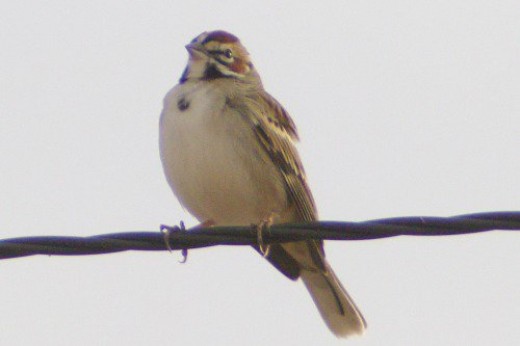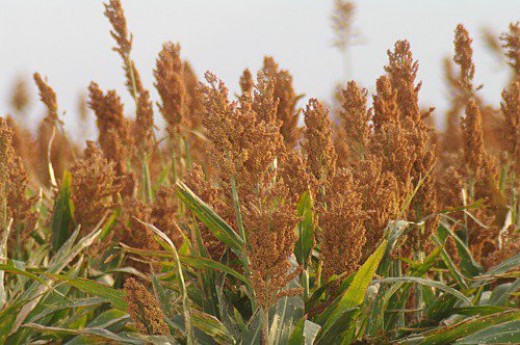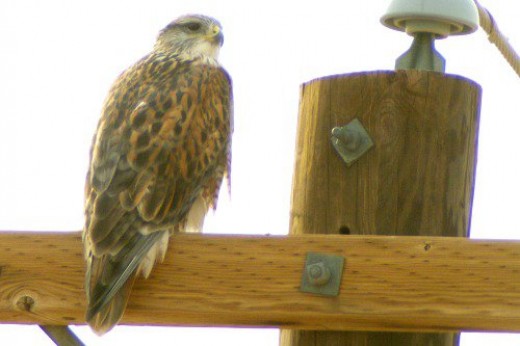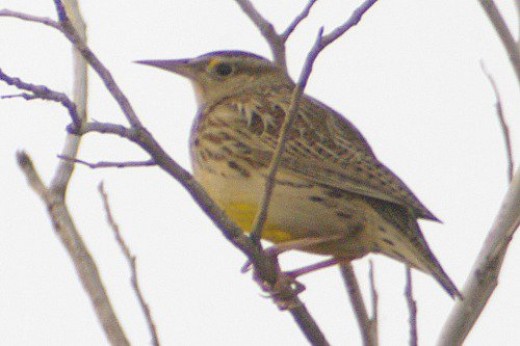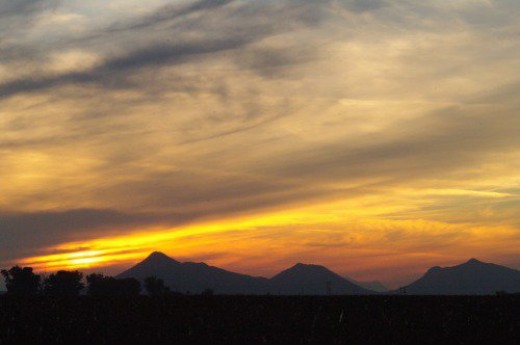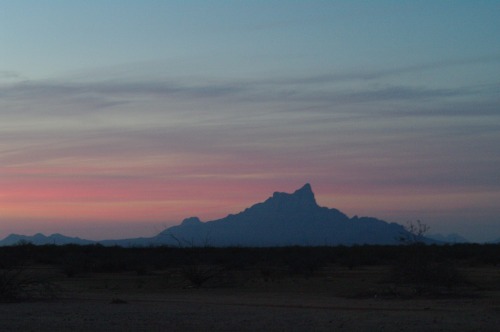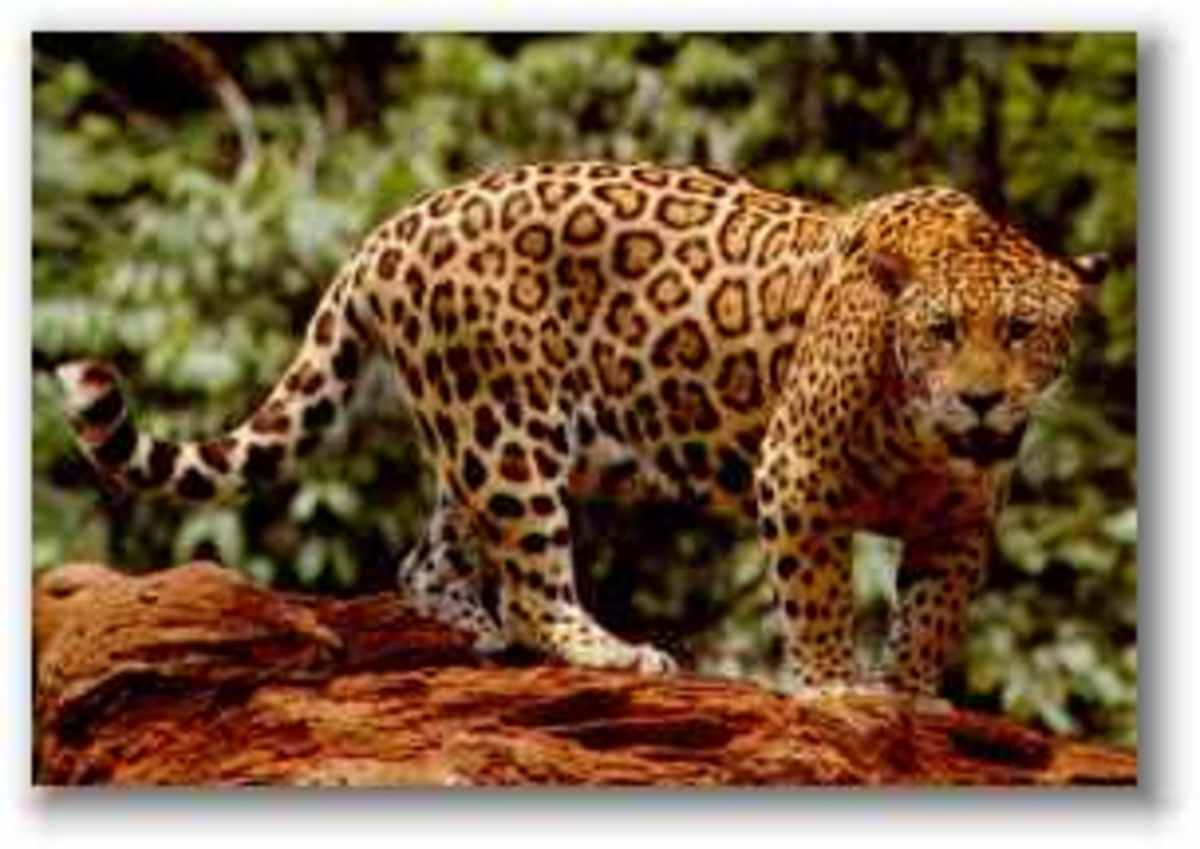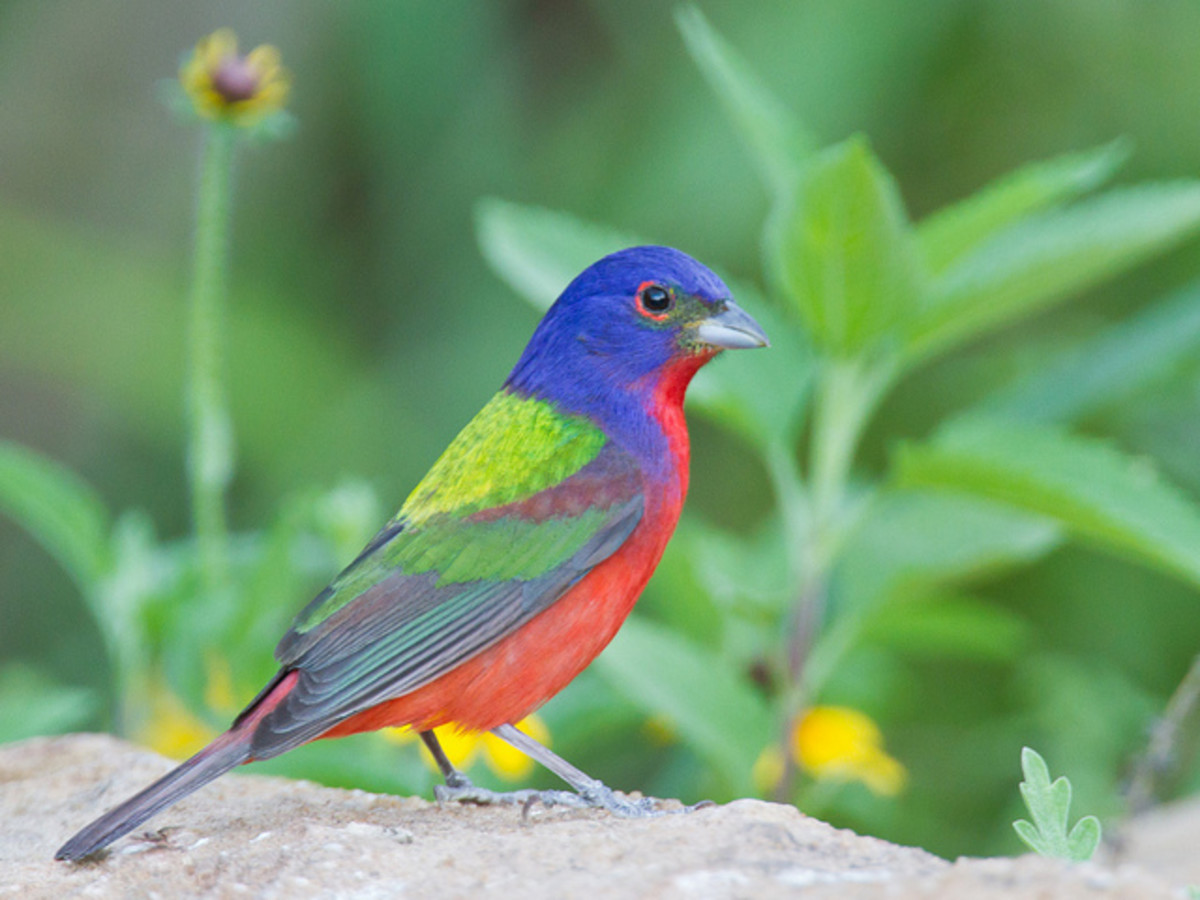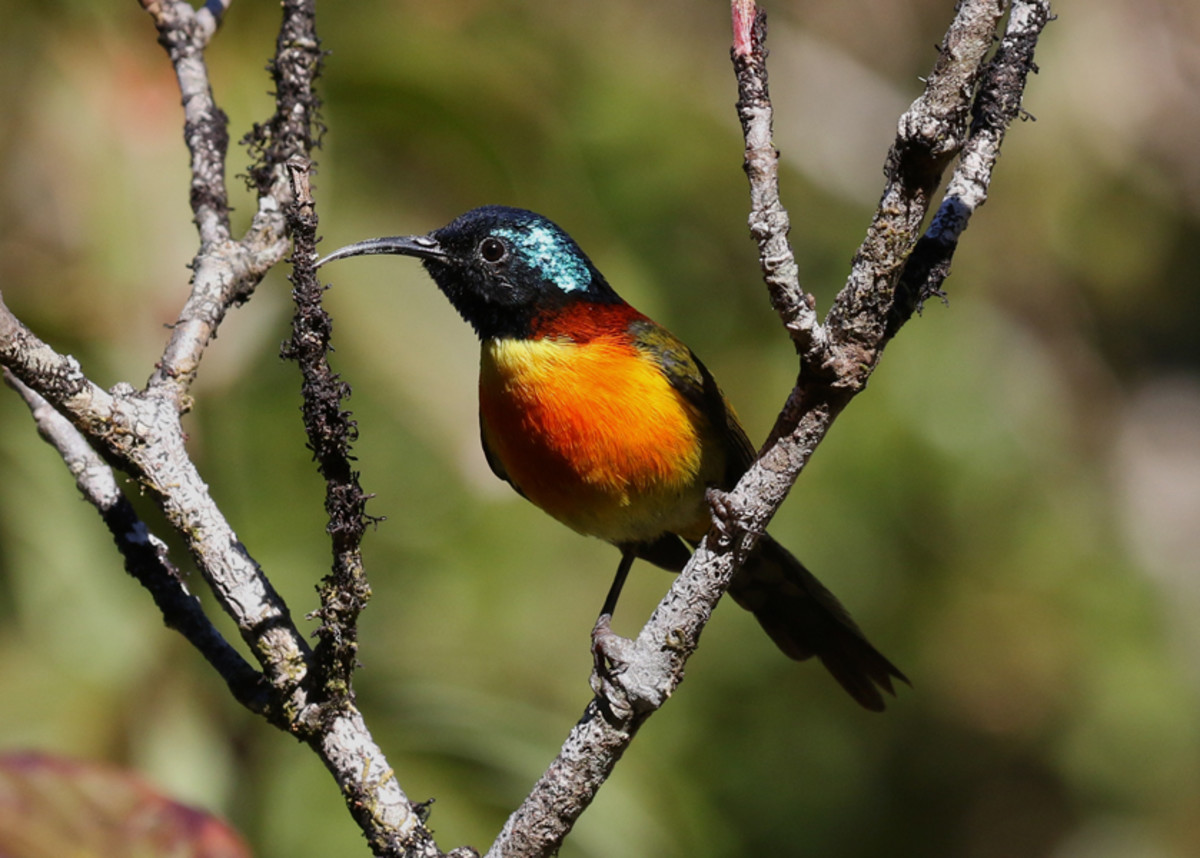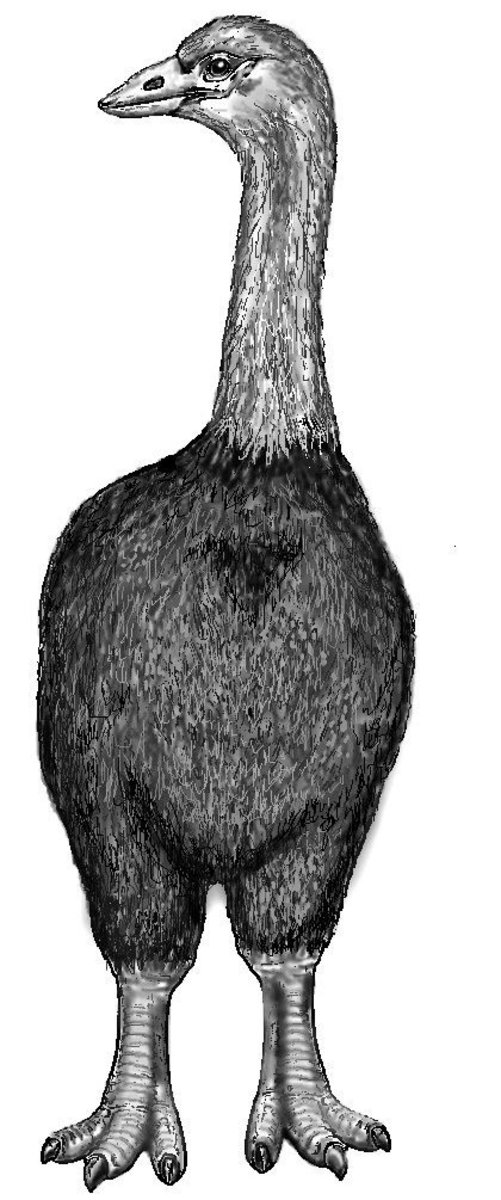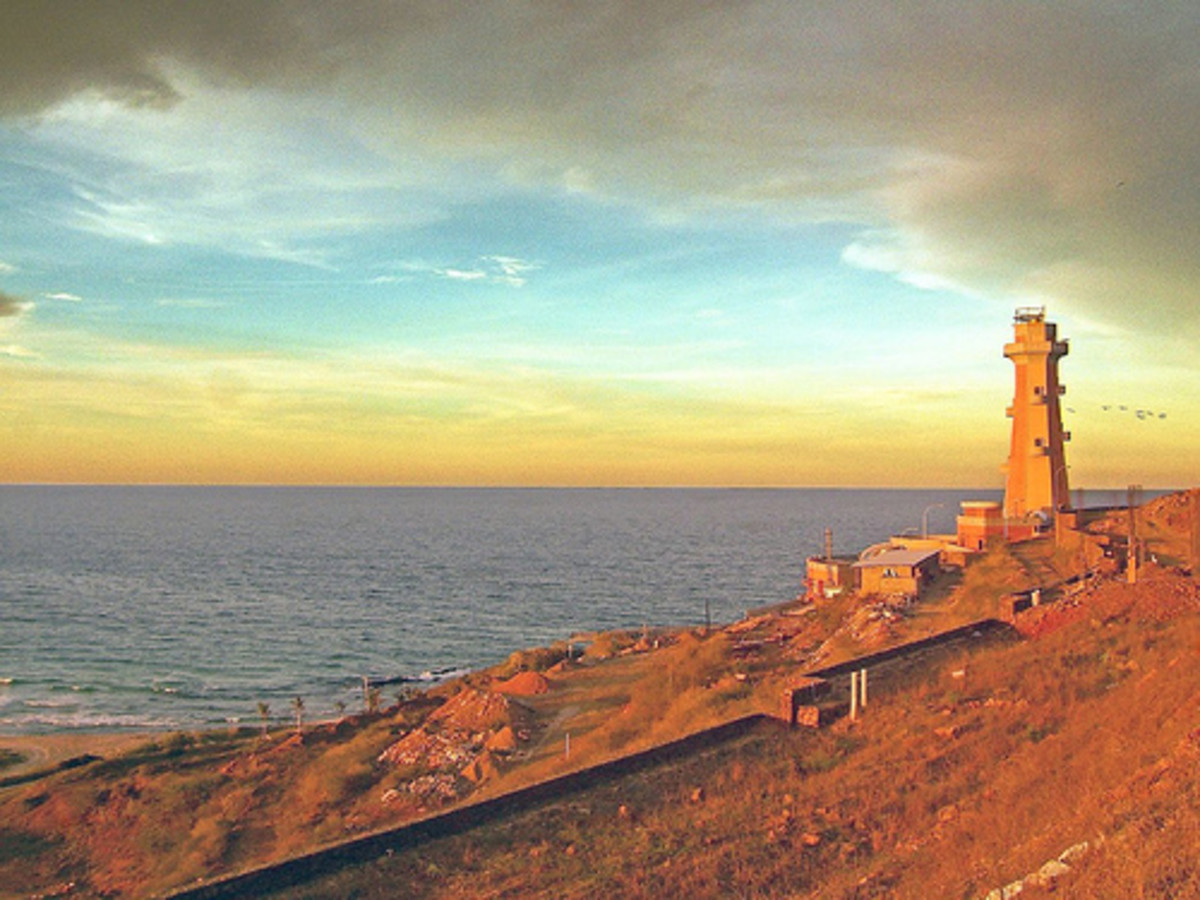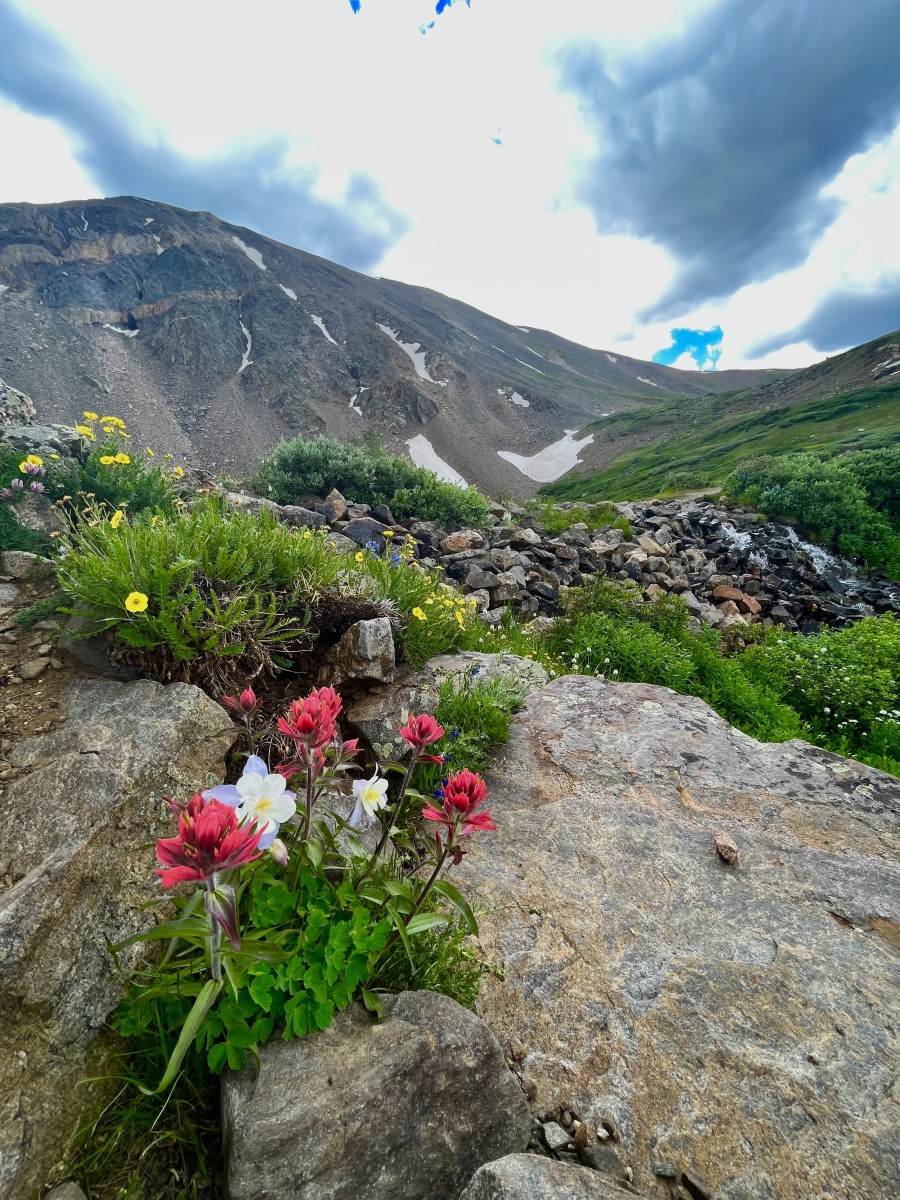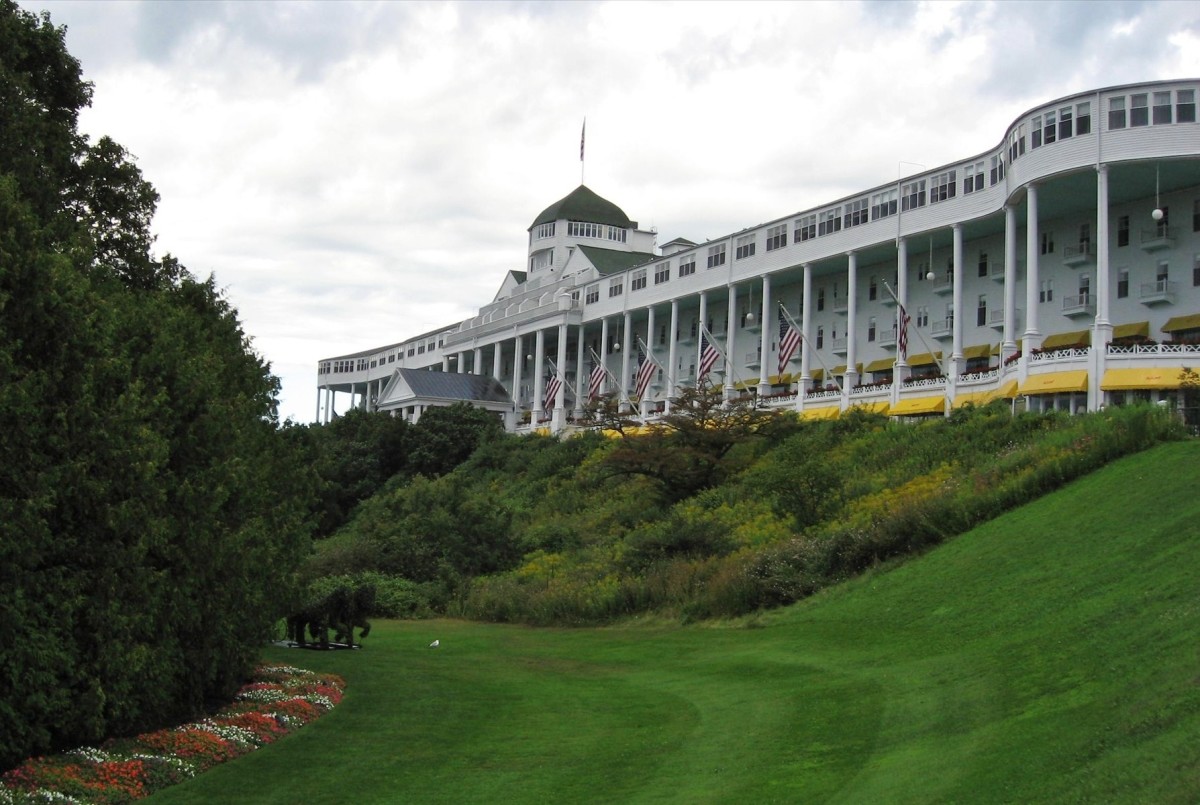Going Birding for the Holidays
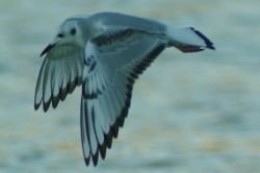
Poor Man's Adventure
I used to take a couple of trips a year. I was getting physical therapy treatments in northern Arizona, so I would plan several days, and I would travel to scenic spots and take pictures. Nowadays, my physical therapist no longer lives in the state (driven out by the government; shame on them!) and I don't feel like spending that kind of money on gas, so I look for places closer to home. If I take a few quick trips locally, in the end I might end up spending as much on gas, but it doesn't seem like it.
If a trip will cost less than $25 in gas, I'll take it. If not, I don't go there. This has cut off the possibility of some longer trips I made in the not-so-distant-past. But there are plenty of interesting places to look for birds, within that range. And we keep getting more and more rare birds. Sometimes I can find them, sometime not. It's getting harder, because I already have 271 bird species on my life list. The life list is the list of birds I have seen in the wild in my lifetime. (As of July 4, 2014, my life list has 298 on it. I'm almost there! At 300, that is. More goals will be set after I make that one.)
For many years in my family, we were used to taking our holidays on off days. Some of our kids work on the holidays because they work for places that cater to folks who like to do things like eat out on Christmas. Some of them wanted to spend the actual day with the other side of the family. This turned out to be a very good tradition when it comes to going birding, too, because on the holidays themselves, a lot of places are mobbed with people, especially kids, and birds go into hiding when there are too many people around.
So consider what I do to be an ongoing holiday of looking for birds and taking their pictures. I have gone birding more often lately anyway, usually several times a week. I turn in a report to eBird every time I see anything at all interesting. For this year, I have turned in 113 eBird reports (make that 164 as of July 4). That's about one in every three days. Sometimes I go more than one place in a day, and turn in more than one report. eBird is run by Cornell University. They collect data on where birds have been observed, and in what numbers. This tells them things like migration patterns, which birds are losing population, and other things like that. A few years ago, there were some massive forest fires in Mexico. There were also massive forest fires here, but we fight them and put them out before they burn an entire mountain range. I have a theory that some of the rare birds we are getting these days are really birds who can't find habitat in Mexico anymore, because I doubt if they have the resources to fight a forest fire like we do.
This year, I had the opportunity to meet a young man who travels for birding, with his family (he is probably the only birder, but they take him someplace, and he uses it as an opportunity to bird in a new location.) He spent the Thanksgiving week in southern Arizona, and traveled all over. The day after Thanksgiving, we went to Sweetwater Wetlands together. That's a favorite place for me to bird, nice and convenient, and they usually have a lot of interesting birds, especially in winter.
Would you believe GULLS in Arizona? Whod'a thunk? I have seen SIX different species of gulls here so far. The gull in the photo is a Bonaparte's Gull. Prior to this trip (across town), I heard of one in Gilbert Water Ranch, which is 90 miles away, barely within my $25 range. So I went there just for that bird, and got some good photos. I did it under the assumption I would be unlikely to find one close to home. Boy was I wrong! This particular gull was in the company of two OTHER gulls of the same species. On this day, they were flying around, diving deep enough to submerge their heads and catch a little tidbit, then sitting on the surface long enough to swallow it, and then taking off again. So they were in the air most of the time. Taking pictures of flying birds is a bit more challenging. But I'm getting better at it. I was using the lens that telescopes out to 1300mm, hand-held, hand-focused, and I got a good dozen really decent photos. This is my favorite.
Unless otherwise noted, all photos are mine.
Birding as a Fitness Activity
In March, I want to go on a 4 mile hike, round trip. The most I had been hiking on a given day was 2 miles, so I decided to step it up. I have a couple of physical problems that make hiking a bit more difficult, but fortunately, my ability is improving. The most I ever hiked in one day was 10 miles, and I was only in my teens when I did that.
So I went on a couple of birding trips recently that would increase the distance I had walked. The first was to the Sabino Canyon Dam, which is east of most of Tucson. It's a 3 mile hike round trip. As I was driving, I was debating whether to take the tram to a spot close to the dam, but when I talked to the person at the ticket counter, she said that if I was waiting at one of the bus stops, I could pay cash and get a ride back. So I decided to try it. I was looking for a Louisiana Waterthrush. This is a rare bird here, but I know of at least three that have been here recently, and one of them was in Sabino Canyon. I also heard and saw one of its "cousins", a Northern Waterthrush, there several weeks ago. I have yet to get a decent picture of that one. But I'm getting ahead of my story.
So I started walking, and it was pretty easy, so I kept going. I mostly took pictures of scenery, but I had my telephoto lens on the camera, so they were pretty tight. I decided to switch lenses on the way back so I could get some wide angle shots (and that's when I saw the Roadrunner. Never mind. I have good pictures of him already). So just about the time I was thinking I was too tired and needed to start back, I arrived at the dam. After rain, a goodly amount of water will flow over the dam. I am told that after a recent rain, it was flowing at a rate of 97 feet a second. But when I went there, it was BEFORE the rain, which was due the next day, and there were only a few puddles, not even holding enough water to fill the household water tank. I heard the Waterthrush as I crossed on a bridge below the dam, but never really saw it. I didn't see too much of anything else, either, except the hawk on a distant tree. A man stopped me and asked, "Is that owl REAL?" I said, yes, and it's a hawk, not an owl. I had been taking its picture, and it was moving its head around. :)
So nothing new that time, but I walked three miles. Yippee!
Update, July 4. My longest hike so far this year is 5 miles. I didn't try to go on the 4 mile hike this past spring because there was almost no rain, so there would be no wildflowers, and little water in pools. I postponed it a year, and hope we have better winter rains. I just turned 70. For my birthday, I will take a shorter hike, up to the top of Wasson Peak, but not until the weather cools off. The last time I did that hike was when I was 50.
I will do my July 4 hiking on the Monday after, provided some of the recently reported birds are still being reported...
A few scenery pictures below...
Hike to Sabino Canyon Dam
Click thumbnail to view full-size













Finding the Louisiana Waterthrush
My first attempt to locate the Louisiana Waterthrush was made along the Santa Cruz River near the bridge on Ina Road. This is in southern Arizona. The water here is effluent from a water treatment plant (unless it rains, in which case, it's a mixture of effluent and rain water). When I went, I could see that it was possible to get near the water on the western bank, so I walked down there. There was a break in the trees, and I went through there, and there was a nice place to sit on the bank. An experienced birder had waded through the effluent (at a point where it is less than 3 inches deep) to get to a little island in the middle of the river. Pretty soon, we both heard the bird. The bird landed upstream a little, and from where he was sitting, he could get a clear picture of it. I wasn't so lucky. There was a large dead bush in the way. I never did see the bird from that vantage point.
After the other birder left, I walked down to the place where you can easily cross the river. I could hear the bird from there as well. But for various reasons I won't go into right now, I decided not to wade in the effluent. For one thing, I only had on my street shoes, and no way to protect them from the water. So, since it was getting close to sunset, I left.
In the pictures below, I present an example of how, when I don't get the bird I am looking for, I often get a consolation prize. Thank you, God!
After that attempt, I then went to Sabino Canyon, as I explained above, but not having any better luck there, I decided to come back, and see if I could find a different place on the bank to sit. When I got there, I just started cross country through the weeds, and when I got to the trees, I just wandered in there. It's like a thicket in there. Imagine that in the desert. So I started crawling around in there, trying to get past the trees. It wasn't easy. There were many low lying branches I had to go over or crawl under. Did you know that many trees in Arizona have thorns on them? :) Anyway, in the end, I did a lot of bushwhacking, and wound up at essentially the same place as last time, and in no better position to see the place where the bird had been hanging out.
So I went back out of the trees, using the old route, and then went further south, and went back in, aiming for a spot I figured I'd be able to see the bird. This time, I found another place to sit on the bank, and because I had my camp chair with me, I made myself comfortable and waited. There's a spit there, and the water is very shallow, and I thought, this is a place a Louisiana Waterthrush would like to feed. And I waited and waited. Pretty soon, I noticed another consolation prize, this time up in the tree. TWO, and they were courting each other. My best picture, though, is of the two hanging one above the other on a branch, so I present that one. And then I heard the bird. The bird kept flying from branch to branch in the same tree, and I simply couldn't see it. So I sat and waited. After about 15 minutes, it got quiet, so I looked, and it was in the water next to the spit, feeding! I didn't know they bob their tails when wading in water, but they do. And it was quite dark under those trees, and that with the motion made it a bit of a challenge to capture a good photo of the bird.
So I took about 120 pictures, and got a handful of good ones. Yippee!
By the way, if all you ever take pictures of is birds, you will miss all the other beauty in the area. I always look for other interesting and photogenic things.
Looking for Louisiana Waterthrush
Click thumbnail to view full-size












Of Woodpeckers and Water Birds
My next target was the Lewis's Woodpecker someone had reported. I made a trip or two to the location I thought he would be, and didn't see him. While waiting to see if he would show up, I noticed a young man who expressed curiosity about my big lens. He stopped by and we chatted for quite awhile. It was great fun, and maybe we will keep in touch.
Then someone reported that the woodpecker could be found near a certain pink pipe by the ball field in Reid Park, so next time I went there. No luck that time, either. The following time, I went and sat for quite awhile and thought I saw him. And then I saw him again, and he flew to the top of a power pole behind a very large white house across the street from the park. The owner of the house was outside, and graciously allowed me to enter his yard to photograph the bird. Yet, my photos were not satisfactory. So I drove around the neighborhood, hoping to locate the alley on which the power pole stood, with no luck whatsoever, because most of the neighborhood didn't even HAVE alleys, and the one alley I found was quite far away for a shot, much worse than where I had been, and someone had let a tree grow right smack dab in the middle of the alley, so there was no way to drive in. I didn't feel like walking, since it was pretty obvious I wouldn't get closer that way. However, during my explorations, I found three Harris's Hawks: a parent and two youngsters.
So I went back yet another time, and this time I took my big lens and a tripod, and set up on the side of the road next to the street, and got the pictures I will show you. I'm still not happy with them, but they are much better, and they'll have to do.
Another rare bird that had been reported was a short distance away. They said it was a female Black Scoter. Whoever heard of a Scoter in southern Arizona? The bird books say it's very rare. So I went over there, and I did see her. She was asleep practically the whole time I was there, and she was the better part of the way across the pond. When she did look up, I grabbed a couple of quick pictures. The one I will show you is one of them. Alas! That was the best I could do.
Most people who plan facilities that attract birds never worry about people like me. They don't make things convenient. Like so many other ponds, this one is fenced, and the fence isn't even close to the pond, and the pond is down below the bank a ways, so if the bird is close, you can't even see it. If it's further away, it's too far to get good pictures. You can't win!
Hawks, Woodpecker, and Scoter
Click thumbnail to view full-size




Tubac
The next birds I wanted to find were allegedly in the vicinity of Tubac. This is a small town between Green Valley and Nogales. Nogales is a border town, with part on the American side, and part on the Mexican side. Tubac is also an artistic community, and a rather interesting place I want to explore further.
I was seeking some very rare birds there. One was the Sinaloa Wren, which pretty much never comes north of Mexico. The other two were a pair of Green Kingfishers. Some species of Kingfishers are very gorgeous, so I was really interested in getting these birds. I was told that if I went to the bridge in Tubac, and took the de Anza Trail south, to Clark Crossing, I would find these birds. (Turns out that was incorrect. They had been seen by Santa Gertrudis Lane, several miles south of there, by Tumacacori.) In any case, the trip would be worth it, no matter what I found or didn't find.
I'd estimate I probably hiked five miles on that walk. So I'm all set for my spring hike of four miles, provided I keep it up!
I started out close to the bridge, and hiked south, and I am going to jump forward in time for a bit and make note of the fact that there was one location close to the beginning of the trail that I stopped by later on the way back. Guess what I found there. A Lousiana Waterthrush! And it was in the open, but only for a short time. In the tiny puddle, this bird was taking a bath! After I left that location, I met three birders specifically looking for the bird, and I told them where the puddle was.
Backing up, I am walking south. The drive down to Tubac is worth it because of the gorgeous mountains, even if I don't do anything else. But since I took almost all the pictures of the mountains on my hike, I will start with the ones I took there.
Along the way, I saw various houses. What a beautiful place to have a house! The de Anza trail grounds belong to the government, and many people's back yards are right up against the trail area. People haven't put up fences or walls as a general rule. It's beautiful to look at, but I wouldn't want all those strangers traipsing past my back yard!
I ran across a great many beautiful things. Those birds were not, alas, among them. Unless someone reports they are still around, I'll wait until next year. But I'll show you the other things I saw. And as you will see, I made it to Clark Crossing. I crossed the river there. It was almost bone dry. The only bird I was able to identify there was a Black Phoebe. They sound a lot like a Louisiana Waterthrush. After finishing my hike, I was somewhat tired, but I never did get sore, nor did I from any of my other hikes recently. But I went on to Green Valley and had a nice Chinese dinner and felt fine.
Tubac Trip
Click thumbnail to view full-size














Looking for Bonaparte's Seagulls
Among other things
A few days ago, I heard about a possible Northern Parula in a location on the east side of town. These are such pretty birds, so of course, I wanted to find it. I also got reports of some rarities at a lake on the same side of town.
So off I went. It takes awhile to drive out there, and the first location was a new place. I found it easily enough, and I even saw the cottonwoods that supposedly contained the bird, from the road, with no trouble. (Please keep in mind that birds have wings and they fly, so I won't necessarily find the birds where someone else saw them, but I do my best.) So I got out of my car and walked over there. It was early afternoon, and although I saw a couple of birds fly over, for the most part, it was deader'n a doornail. So I concluded, hey, I'll just hang around and see if it shows up. The day before had been the second of two days of steady rain with lots of runoff. In fact, it made mud on the side of our hill, and knocked down some fairly large rocks. Evidently, they just slid down the side of the hill. I thought they had mud slides in California, not here.
But by the time I got there, the riverbed was dry as a bone, except for occasional patches of mud. There was a location near the cottonwoods that was totally dry, nice sand with no little stickery plants growing in it, so I just lay down on the ground on my back, propped up my head on my backpack, and waited. Waited. Waited. For an hour. No birds. I saw and heard one Gila Woodpecker fly by. That was it. I could have waited longer, but I decided to try for the gulls at that point. I had gotten a number of pictures of scenery, and something else quite interesting, as you will see. And then I left.
Drove on over to the lake, got out my big lens, and trekked down the hill to the lake. Saw some birders there who said the gulls were at the opposite end of the lake. Kept walking. Halfway there, I saw my other target: a Forster's Tern, in the middle of the water. Stopped and took some pictures. Walked on. There were indeed three seagulls on the other end, and they were flying around vigorously, obviously feeding. They'd dive down, submerge just their head, plop on the water, swallow whatever morsel they had gotten, and take off again. That's a tricky situation, because it's much easier to take pictures of a gull sitting on water than one flying allovertheplace. But ya live with what ya got. Hand focusing on flying birds is tricky business, especially since with that lens, the camera RARELY signals that the image is in focus. It doesn't seem to compute as fast as I do. So I just take a huge quantity of pictures and choose the best. I was really lucky this time, and got several excellent shots, and even got a seagull in the water, sitting, for a couple of shots. This is a species that I mentioned driving 90 miles to get before. Based on this and other experiences, I often don't drive that far anymore, waiting for a bird to come to me, in my area, because I see that eventually they usually do.
In the next collection, you see the results of this trip.
East side birding trip
Click thumbnail to view full-size














He Didn't Get One, Either
I heard there were some Greater White-fronted Geese at Arthur Pack Golf Course, and since I could use a good picture, I went looking.
The location was on the north side, a new pond for me. No geese, just the usual suspects, including a lone male Vermilion Flycatcher, always fun to find.
So I went around to the familiar pond on the south side. Nothing. Plenty of coots. Probably at least a hundred. They like to flock and hang out on the grass. Pretty soon, another birder stopped, and we got into a conversation. It was a very interesting conversation, and worth the stop. As we were talking, a coyote showed up. He was stalking the coots. He finally flushed them, and they flew off and landed on the pond, and he gave up. I didn't get a goose, and he didn't get a coot. And I don't give a hoot.
Before I left, I saw a Loggerhead Shrike in a snag across the road. Nice find, first this year.
After that, I went over to Tohono Chul to see what else I could find. I found a few interesting things, but nothing noteworthy. I'll write about this park soon, so I'll leave it at that for now.
Arthur Pack Golf Course
Click thumbnail to view full-size




Are you a birder?
Do you go birding?
Sweetwater Wetlands
Birding with Someone Who REALLY Went Birding for the Holidays
A couple of weeks ago, there was a message on the bird email list from a young man who was interested in finding out more about the birds in southern Arizona. He lives in Washington state. He and his family were planning to spend Thanksgiving week in the area, and he wanted to do plenty of birding. He wanted to increase his life list for the "lower 48" until he had 400 species on it. I responded to his email, told him where to look for various birds. He was interested in going to Sweetwater Wetlands and invited me to go along, and I accepted.
And we met in the afternoon the day after Thanksgiving, and spent a couple of hours going birding together. He had a scope (which is a big help) and I had a camera with a half dead battery (which was a big hindrance). Normally, I would have put my 1300mm lens on to look at the birds in the recharge basins. He ended up tallying the birds there. I used my smaller lens, which goes out to 680mm, and was able to photograph a few of the birds there, and some other birds elsewhere. We then submitted joint reports to eBird about what we had seen. I came up with 36 species, and he had 53. He also counted some variants. Evidently, he kept count on some kind of phone app that automatically made these distinctions. It was very interesting, and a lot of fun.
Sweetwater Wetlands is a set of small ponds with trees, bushes, and bulrushes, and also four large ponds called the recharge basins. It is part of the treatment works for the water used by the city of Tucson. It attracts many water birds, and other birds that like things like insects (warblers, for example), and a few hawks who are looking for bird for dinner, and assorted other species. Nearly 300 species have been reported there. Of course, at different times of the year, there are different birds, as some migrate south for our winter and north for our summer, and some others overwinter there. It's a very pretty place.
You can see my bird report here: eBird.
And by the way, the young man came close to his goal, but I don't know if he made it, yet.
Below, I include some of the decent photographs of birds I got there.
Sample of Sweetwater Birds
Click thumbnail to view full-size













Santa Cruz Flats
I am not done with the holiday birding. Yesterday, I went a couple of places.
First, I went to the cemetery. There was supposed to be a Greater Pewee there. I didn't stay long. I realized that if I was going to find it, I'd probably spend the rest of the afternoon there, and I was interested in going to Santa Cruz Flats.
Santa Cruz Flats is a very flat area that is full of farms. They grow mostly cotton, some corn, grass for cattle, and sod. They may grow other things, but I'm not sure what they grow. I figured, it being a Sunday, I wouldn't have to worry about farm traffic. The roads are mostly dirt, and if there was a lot of traffic, it would force me to close my windows a lot. Santa Cruz Flats is a huge area, and the only practical way to bird the area is what some people call "safari birding". This means birding from your car. One road alone is 15 miles long. I drove most of the length of this road, came back on another, and went to still another location. And there really wasn't any traffic until evening, when apparently the farmers concluded that there wouldn't be any traffic, and started moving their large farm machines along the roads. Some are nearly as wide as the road, and they had to drive partly off road to let me pass.
I was looking for Mountain Plovers (very hard to find, but if you keep at it, you'll probably see them eventually). I didn't find any, unfortunately. I also didn't find any Horned Larks like I wanted to. But I usually find something interesting, often a complete surprise, and yesterday was no exception. First, right off the bat, I found a beautiful Lark Sparrow. As far as I am concerned, this is the prettiest sparrow in the United States. I had one lousy picture from before. This one was cooperative, and I got several really good pictures of him. And I also found a Meadowlark. Haven't figured out yet whether it's Eastern or Western. I have one lousy photo of an Eastern. Western would be a life bird. But in addition, I got two life birds. One was a Merlin, and not realizing what it was, I didn't try very hard to get a good picture, and I didn't. The other was a Ferruginous Hawk. This hawk flew away as soon as I stopped and stuck my lens out of the car window, several times, but finally settled down, and I was able to get a good picture.
There were so many hawks out there. In fact, when I was driving away, I saw one on every two or three power poles. Most of them would have been Red-tailed Hawks. And I also saw something else that is common this time of year, toward evening. Hundreds of blackbirds on the electric wires. I estimate 500 Brewer's Blackbirds. Different species seem to occupy the wires at different times. Other times, you'll see nothing but female Red-winged Blackbirds, for example. The males seem to come a little later.
After that, I went to a Chinese Buffet and had a wonderful dinner with one of my favorite dishes: little squid. I cam home well fed.
Santa Cruz Flats Birds
Click thumbnail to view full-size













In case you are wondering, we DID spend Thanksgiving with the family, and had a wonderful dinner and lots of fun, with some spirited conversations. My birding activities were on other days.
Writing about birding is fun. Doing the actual birding is even more fun. I'm off to go birding. Bye!

